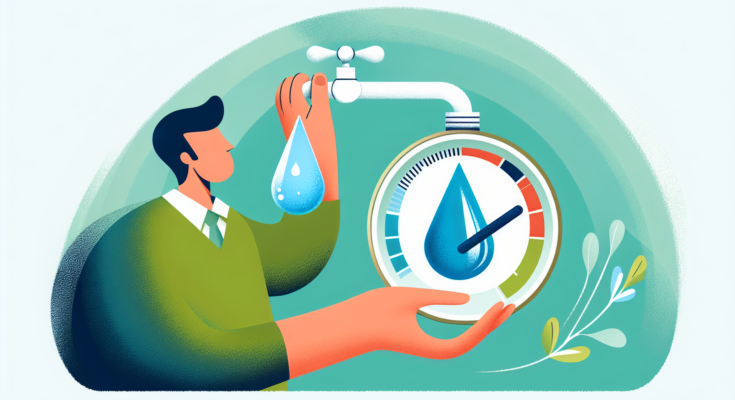Struggling with high sewer costs? Slash your expenses with this straightforward guide on “how to reduce sewer bill”. We lay out 7 simple yet impactful ways to cut costs and conserve water – without sacrificing convenience or lifestyle. Read on for insights that translate into real savings on your next statement.
Key Takeaways
- Understanding the structure of sewer bills, which is based on water consumption, helps identify ways to manage costs, recognizing factors like base charges, additional fees, flat rates for unmetered services, and location-based adjustments.
- Implementing smart water practices such as fixing leaks, only running full loads in dishwashers and washing machines, and installing low flow fixtures can significantly lower sewer bills by reducing water usage and waste.
- Regular maintenance of sewer systems and professional assessments can prevent costly repairs and offer tailored advice for water conservation, while investing in high-efficiency appliances can lead to substantial long-term savings.
Unlock Savings on Your Sewer Bill: A Guide to Understanding Charges
Understanding the anatomy of your sewer bill is the first step in mastering the art of cost reduction. The volume of water that flows into your abode is the heartbeat of your sewer charges. As the pulse of water usage quickens, so does the pace at which your sewer bill climbs, mirroring the cost of treating the wastewater that exits your home. Grasping this fundamental connection is crucial in taking the reins of your water consumption and steering towards saving.
Your sewer bill’s structure may feel like a complex puzzle, but key pieces include:
- A base charge that covers a certain volume of usage, with additional fees for any extra consumption.
- For those with unmetered water service, who are billed at a flat rate, reflecting an estimated use rather than the actual volume.
- The location of your residence can nudge your sewer bill in either direction, adding another layer to the billing mosaic.
- Sewer bills generally tower over water bills due to the intricate and costly process of wastewater treatment.
Smart Water Practices for Lowering Sewer Bills
Embarking on the quest to reduce your sewer bill demands a shift towards smarter water practices. Simple actions like shortening your showers to a swift five minutes can create a ripple effect of savings. And if you’re one to embrace the gym lifestyle, taking advantage of the facilities’ showers can further dry up your home water usage.
Ever considered the water wastage while you brush your pearly whites? Turning off the tap as you groom can save thousands of gallons yearly, making your sewer bill and the planet smile.
Detect and Repair Leaks Promptly
A stealthy drip from a leaky faucet or a silent leak in the toilet tank can be a silent saboteur of your budget. Regular leak inspections should become part of your routine, like checking for faucet gaskets and pipe fittings betraying their duty by allowing water to escape.
Remember, keeping your ship airtight by repairing leaks can save a staggering 10% on your water bill—now that’s a rescue worth the effort!
Embrace Full Load Efficiency
Your appliances can be allies in your battle to lower your sewer bill, as using them wisely can significantly reduce high sewer bills. Embrace the full potential of your dishwasher and washing machine by running them only when they’re fully loaded. This strategy alone can save your household hundreds, if not thousands, of gallons of water each year.
Imagine skipping just one dishwasher load a week, washing dishes by hand instead, or tweaking your washing machine’s water level settings—the cumulative effect on your sewer bill could be as satisfying as finding an extra coin in the laundry.
Upgrade to Low Flow Fixtures
The flow of your fixtures, including low flow faucets, can be a floodgate to savings. Installing WaterSense-labeled low-flow fixtures is like choosing a sleek sailboat over a bulky tanker—efficient and economical. To further enhance your water efficiency, consider to install low flow plumbing. These water-wise products are 20% more efficient than their standard counterparts, quenching your thirst for savings.
Swapping out old faucets and showerheads can keep an average family’s budget afloat with $250 in conserved water and electricity costs over their lifetime. And it’s not just about saving droplets; it’s about reducing the energy used to heat that water, doubling the benefits on your water and sewer bills.
Strategic Water Management Inside and Outside
The dance of managing water usage extends beyond the walls of your home. Outdoor water that makes its way into the sewer system can stealthily hike up your sewer bill without you even noticing.
Strategizing water usage inside and outside your sanctuary can be as decisive as a game of chess, ensuring that every drop serves a purpose and none venture down the drain in vain.
Optimize Indoor Water Use
Inside your home, water conservation can be as simple as turning a knob. By shutting off the faucet while brushing teeth or engaging in other grooming activities, you can save a staggering 5,700 gallons of water annually. A little addition like faucet aerators curtails the water flow, further contributing to the conservation effort.
And when it comes to handwashing, opting for cold over hot water can reduce both water and energy use, providing a double dose of savings to save money.
Efficient Outdoor Watering Techniques
When you step outside, your garden and lawn beckon for attention. Equip your sprinkler system with a rain sensor to avoid unnecessary watering, saving up to 2,000 gallons each year. WaterSense-labeled irrigation controllers are like having a green-thumbed assistant, tailoring watering schedules to the weather and landscape, thus preventing overwatering.
Timing is everything—watering before 9 a.m. optimizes absorption and minimizes evaporation, which translates to efficiency and decreased sewer bills. By providing just the right amount of water and using sprinklers that emit larger droplets, you’ll avoid quenching your lawn’s thirst with excess water, keeping those sewer bills in check. And don’t forget, choosing plants that are acclimated to your climate can slash your outdoor water usage in half.
Invest in Water-Saving Innovations
Investing in water-saving innovations is akin to planting a seed that grows into a money tree. Homes that integrate high-efficiency appliances and fixtures, including energy efficient appliances, can conserve up to 30% of their indoor water use. With technologies like WaterSense-labeled toilets, a family of four can save an impressive 16,000 gallons of water annually. By choosing to save water, homeowners can also opt for water efficient ENERGY STAR-certified clothes washers, which offer a modern solution to reducing water usage, especially when compared to their older, thirstier counterparts.
And let’s not overlook the dual benefits of WaterSense aerators and showerheads, which can save both water and energy, contributing to an annual family saving of 3,500 gallons of water and 410 kilowatt-hours of electricity. The long-term savings from such innovations are substantial, with the potential to pocket up to $380 a year.
The Role of Regular Sewer System Maintenance
Regular maintenance of your sewer system is like taking your car for a check-up—it’s essential for smooth operation. Ensuring your system is free from blockages and other issues is crucial in avoiding costly repairs. Enlisting the expertise of a professional plumber for maintenance can prevent minor issues from escalating into serious, wallet-draining disasters. Techniques like hydro jetting use the power of high-pressure water to clear out debris, ensuring that your sewer system flows as freely as a mountain stream.
Regular inspections can identify potential hiccups early on, sparing you from the shock of high sewer bills caused by unseen problems.
Maximize Savings with Professional Plumbing Assessment
Consider a professional plumbing assessment the compass that guides you through the murky waters of water and sewer bill savings. Professional plumbers bring a wealth of knowledge to the table, accurately pinpointing and addressing any plumbing inefficiencies. With guarantees and warranties in their toolkit, they provide not only solutions but also peace of mind.
Annual inspections by these experts are like routine health check-ups for your home, catching issues early and keeping your systems in tip-top shape. They’re also your personal consultants, offering tailored advice on water conservation strategies and recommending the best water-saving fixtures to maximize your savings.
Get Smart About Your Utility Bills
Getting smart about your utility bills can be as rewarding as acing a difficult exam. While utility and phone bills don’t usually make an appearance on your credit report, innovative services like eCredable Lift can change that by reporting your utility bill payments to TransUnion. On-time rent payments can also shine on your credit history through third-party services, painting a picture of financial responsibility.
It’s vital to stay on top of these bills to dodge late fees and the hassle of utility disconnections. Missed payments can lead to more than just immediate penalties; they might even dent your credit score if they end up in collections.
Summary
As we bring our journey to a close, it’s clear that the path to reducing your sewer bill is paved with a blend of knowledge, strategy, and innovation. From understanding the structure of sewer charges to adopting water-saving techniques and technologies, every drop of effort counts. Regular maintenance and expert assessments play pivotal roles in keeping your sewer system in order and your bills within your control. Staying informed and responsible with your utility bills further solidifies your financial savvy. Embrace these practices consistently, and you’ll soon see your sewer bill reflect the fruits of your labor, ensuring a sustainable and cost-effective water future for your household.
Frequently Asked Questions
Reducing your water usage directly lowers your sewer bill because less water entering your home means less wastewater to treat, resulting in reduced charges.
Yes, fixing leaks can make a significant difference on your utility bills by potentially saving up to 10% on your water bill, leading to overall cost savings.
Yes, investing in WaterSense-labeled fixtures is worth it because they are 20% more efficient and can save an average family $250 over their lifetime in water and electricity costs. Save money while helping the environment.
Regular sewer system maintenance can save you money by preventing blockages and costly repairs, which helps avoid emergency repair bills and inefficiencies.
To reduce your sewer bill, consider using rain sensors, WaterSense-labeled irrigation controllers, watering before 9 a.m., and choosing climate-appropriate plants to minimize unnecessary water usage. These techniques can make a significant impact on your bill.




